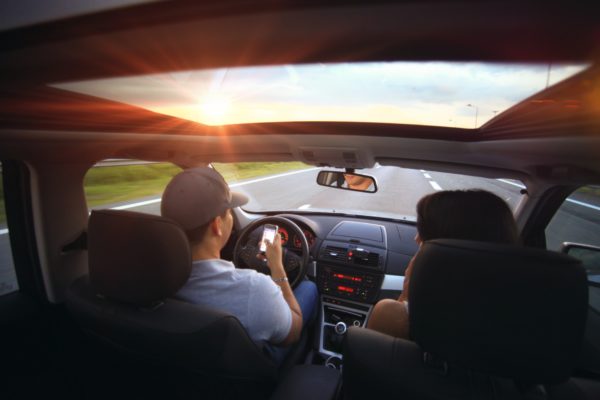
Cars are growing smarter with every passing year, but much of their intelligence to this point has been focused on becoming more aware of the world around the car. This has been achieved with cameras watching for blind spots, radar sensors measuring distance and assisting parking, and the creation of systems capable of averting fatal crashes or driving the car with only minimal input from the occupants.
Harman International, a Stamford-based subsidiary of Samsung Electronics, recently purchased Caaresys, an Israeli company that develops vehicle passenger monitoring systems powered by low-emission radar. According to the companies, this technology enhances safety for passengers, provide health and wellness functionality and even prevent hot car deaths.
“With the acquisition of Caaresys, we gain market-leading in-cabin radar sensing technology and radar-enabled features that can quickly integrate into our products,” said Christian Sobottka, president of Harman’s automotive division, in a press statement announcing the acquisition. “And by partnering with Harman, automakers can deliver the key safety and well-being features that consumers demand today as opposed to years from now.”
“It’s with excitement and pride that we join the Haman team, especially at this time when they are doing so much to transform what the in-cabin experience can be for consumers,” said Ilya Sloushch, co-founder and CEO of Caaresys, in the same statement.
Sloushch will lead the newly established in-cabin radar team at Harman, adding that the Stamford-based company’s “successful partnerships with leading automakers will offer unprecedented scale and reach for our technologies and extend the benefits enabled by in-cabin radar to more drivers and passengers than ever before.”
Harman’s Germany-based Eric Theisinger is the product manager for the Advanced Driver-Assistance Systems business unit and the development lead for Harman’s driver monitoring and cabin sensing teams. He explained that Caaresys developed technology, which uses low energy radar pulses to gather data from inside the car without relying on cameras, which he viewed as a valuable set of tools to give car manufacturers.
The set of potential applications for the technology is huge, Theisinger added, noting that he expects many automakers will want it deployed so that it scans the car a set period of time after it has been parked and alert the driver via text if it senses a small living being, such as a dog or child inside. The ability for the technology to measure heartrate can provide some novel applications as well.
“That enables automakers, our customers to know that everything is okay with the people in the car,” Theisinger explained. “If there were an emergency you could use that information to know how to react. But also, if you see the industry trend towards more self-driving cars and you need to do a handover you really want to make sure that everything is okay with your driver.”
Checking the health of the driver during a “hand-over” could be useful ”” for instance, in videos showing self-driving Teslas running over child-size mannequins on test tracks. Some critics pointed out that the Tesla Autopilot program attempted to disengage on the test track and asked the driver to takeover, which could save lives in some situations.Â
But if a driver is unconscious or having a heart attack, they may not be able to take the wheel;” thus, Theisinger noted, the Cararesys technology can also make situations involving heart attacks somewhat less likely by integrating the car into health and wellness routines.
“If you want to, you could have the car continuously monitor the driver’s heart rate,” Theisinger said. “You could for example offer a de-stressing feature. Maybe if a passenger is stressed you can offer preset breathing exercises.”
Theisinger also predicted that the technology could lead to a future without hot car deaths, which kill on average 38 children under the age of 15 every year in the U.S., according to the National Safety Council. He speculated that the technology could be used to share information with first responders in case of an accident, though that may still be some time away.
“For the first functionality, the baby care or life presence detection technology we expect to be ready to share with automakers around the second half of 2024 to 2025,” Theisinger said.






















